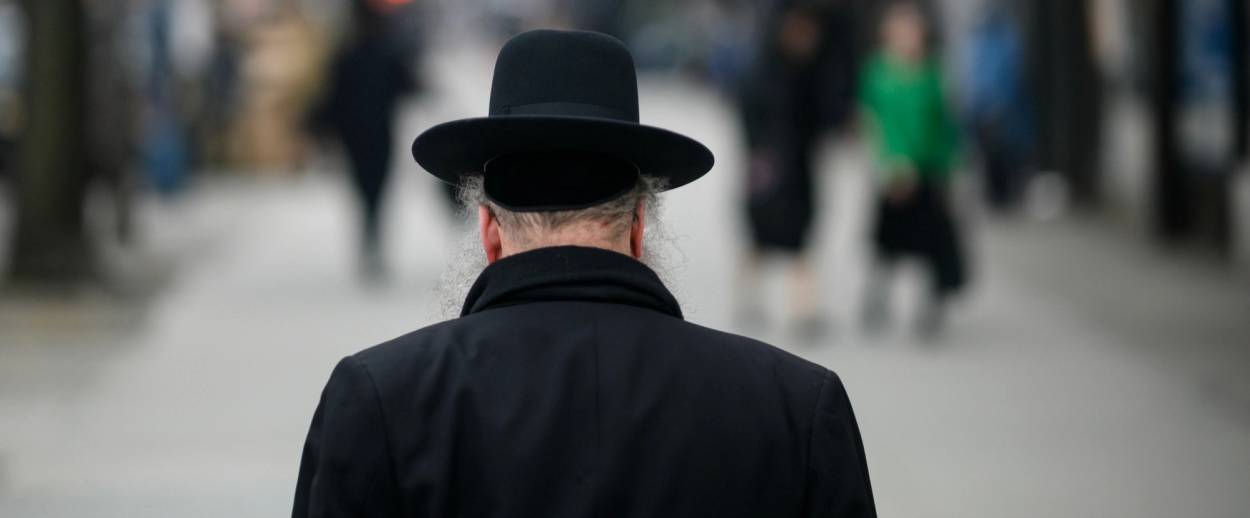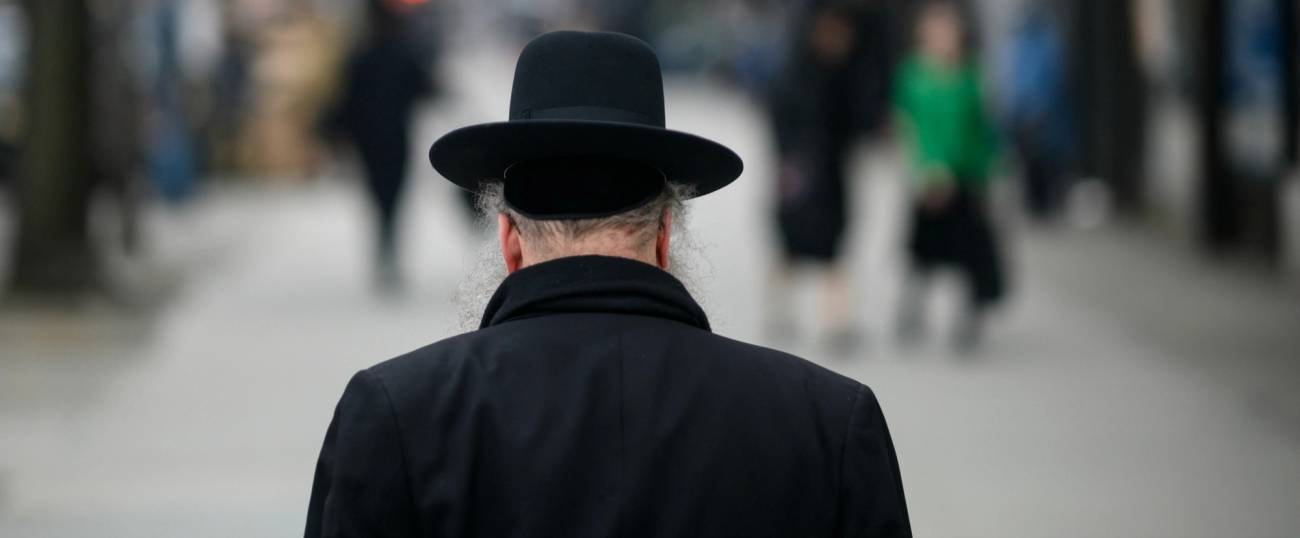A Night Ride With the Williamsburg Shomrim
As anti-Semitic attacks are on the rise, the community’s neighborhood watch steps up




The anti-Semitic attacks that have drawn attention to the Haredi enclave of South Williamsburg are worrying, but luckily they’re not happening on a nightly or even a weekly basis. A weeknight patrol with the Shomrim, the Williamsburg community’s neighborhood watch, is unlikely to encounter an unprovoked assault on anyone who’s visibly Jewish. The attacks have no logic or organization behind them—they cannot be anticipated, and they aren’t geographically clustered. So far, nothing has been able to stop or deter them.
As a longtime Shomrim volunteer explained to me as I rode along for a shift that lasted from around 11 PM until 3:30 a.m. on a recent Monday night, the organization is like a Jewish 311, local-level solvers of problems for which the police might not be perfectly suited—crowd control at major community events, helping elderly people who have wandered from home, or resolving raccoon or bird-related mishaps. Last year saw an epidemic of bicycle-jackings in the area. But the Shomrim are also extra sets of eyes in a place whose residents are increasingly concerned about their safety. Earlier this month, four attackers beat a 24-year-old Hasidic man in the south end of the neighborhood. Three Jewish men were attacked in separate incidents in the neighborhood early one morning in August, shortly after Tisha B’Av.
Over the course of the night, the two volunteers I rode with watched as sidewalk traffic thinned, and as the Jews of Williamsburg returned home from workplaces and kollels and simchas. The Shomrim drive unmarked SUVs in a circuitous patrol around a small patch of north Brooklyn, never straying north of Broadway, or, from what I could tell, south of Park Avenue. They dress in matching white button-up shirts, and communicate in English over walkie-talkie. We kept passing local landmarks: A fully-erected Leiter-brand sukkah in the median of a triangular intersection, the giant interlocking art deco boxes of the Pfizer Building on Flushing, Felty Hats on Lee Avenue, the glowing Hebrew letters announcing an enormous school just off of Penn Street. By 1 AM, the sidewalks were nearly empty—a few times an hour we would pass Jewish men walking alone; we drove around a skateboarder riding north on Flushing, heading towards hipster Bushwick.
It turned out to be a routine enough night. A man was spotted rummaging through an unlocked car that clearly wasn’t his. This was not the first time this particular individual was alleged to have done this sort of thing. “He’s a known perp,” one of the volunteers explained. “Most of the perps we know.” One caller to the Shomrim’s hotline said that he’d seen someone with a flashlight in his business, which was behind his house. It turned out it was a partner of his—a false alarm. Did you know the owners? I asked one of the volunteers. Yes, he knew them. Between the Shomrim’s 60 volunteers, everyone knew or knew of just about every orthodox Jew in South Williamsburg. This becomes useful when there’s an anti-Semitic attack, because the Shomrim can easily obtain security footage from Jewish building or business-owners, and because the victims are comfortable speaking about the experience to members of their own community.
The Shomrim also have eyes on communal targets attractive to anti-Semites. Last November, the Shomrim followed a man who had set a trashcan on fire on Ross Street, in the heart of Jewish Williamsburg, within a few hundred feet of a half-dozen shuls. The Shomrim trailed him and called the police. It turned out to be the 26-year-old former Christie Quinn intern responsible for a series of attempted synagogue fires across Brooklyn.
The Williamsburg Shormirm were founded in 1977, when a rabbi and Holocaust survivor named Moshe Hoffman saw a Jewish man face-down in a pool of blood while walking home form shul one shabbat evening. The victim survived his mugging attempt, but the area’s religious and communal leadership, as well as the city government, realized the need for an organized neighborhood watch. New York’s bad old days are over—crime in the area is at a fraction of what it used to be. “Twenty years ago, I was getting out of bed every hour,” one volunteer told me. “It’s beautiful these days.”
The Shormrim endure as a known and trusted middle layer between Jewish citizens and the uniformed police force. The volunteers are Yiddish speakers who aren’t total strangers to the people who need them, and they often get tips about alleged criminals before the police do. To their critics, the Shomrim, versions of which also exist in Boro Park and Crown Heights, are an unaccountable ethnic vigilante group. But the Shomrim are unarmed, and they offer a first-response option that doesn’t necessarily involve gun-toting agents of the state. Their local knowledge is deeper than that of the police, and many of the volunteers have been patrolling the same turf for years or even decades. They can recognize situations that require law enforcement intervention faster and at a more granular level than the NYDP can, but they can also wave the authorities off non-incidents, or defuse smaller matters that might escalate if the cops were involved–suspicious but inevitably non-dangerous or non-criminal activity around schools or synagogues, for example.
South Williamsburg has the kind of low-level disorder you’d expect to find in just about any dense area in any big city. The neighborhood, which is also home to a large Hispanic community, consists of tightly-packed high-rises, public apartment projects, and multi-family row-houses. Shoplifting and counterfeit currency are to be expected in a commercial artery like Lee Avenue—although proving that someone knows they’re using fake money is notably difficult task for a neighborhood watch with no investigative authority, one volunteer explained. An unlit street running diagonally off of Flushing Avenue near the G train and a few blocks from a public housing project is a magnet for car thieves. The day before, tools had been stolen from a construction site in the middle of the afternoon. A rash of tzedakah box thefts from synagogues—at least four within a few days last year, the work of a non-Jewish homeless man living in a nearby shelter—was a bit more unusual. One volunteer showed me a recent picture of a pair of tefillin salvaged from a trash can, the leavings of a smash-and-grab car thief who didn’t know what they were.
And then the attacks escalated last year, bringing a more menacing form of specifically Jewish-related crime. As the volunteers explained, life in Williamsburg hadn’t changed as random violence against Jews became a routine occurrence in Brooklyn’s orthodox neighborhoods. People were looking over their shoulders, but they still went to synagogue in the mornings and still lingered at Thursday-night weddings until the early hours. The day after Tisha B’Av, a group of Jews were attacked walking to synagogue just after 4 a.m. A Shomrim volunteer told me that he saw one of the victims walking to shul at 4 a.m. just a few days later.
Still, there were more Shomrim out than would once have been typical—five cars on patrol, where two might have been suitable in earlier years. We tailed a seemingly-drunk man zig-zagging across a major but traffic-less street for a couple of blocks before the Shomrim decided he wasn’t a wanted criminal or an immediate threat to anyone. Several Shomrim cars sat outside a Jewish-owned house for a couple of hours which a stranger had entered around 2 in the morning while a similarly unknown driver waited patiently outside. The stake-out became a late-night shmooz when the NYPD showed up. Worst case, it was a house break-in or a hostage situation, the cops surmised. Best-case, it was the building super on a work call. The Shomrim determined it was an electrician–another false alarm. “Wow,” one cop said. “At 2:30 in the morning! I should hire that guy!”
Barely awake at this point, I asked one still-alert volunteer when he had to be at work later that day–the Shormirm are educators and building managers and kosher meat purveyors during daylight hours. “Eight a.m.,” he replied. When would he sleep, I asked? “Shabbat. Or Rosh Hashanah.”
Armin Rosen is a staff writer for Tablet Magazine.